Dyeing with peonies
The peonies from the backyard garden are short-lived but very beautiful. They always put on a great show. It feels like a waste throwing away their wilted petals.
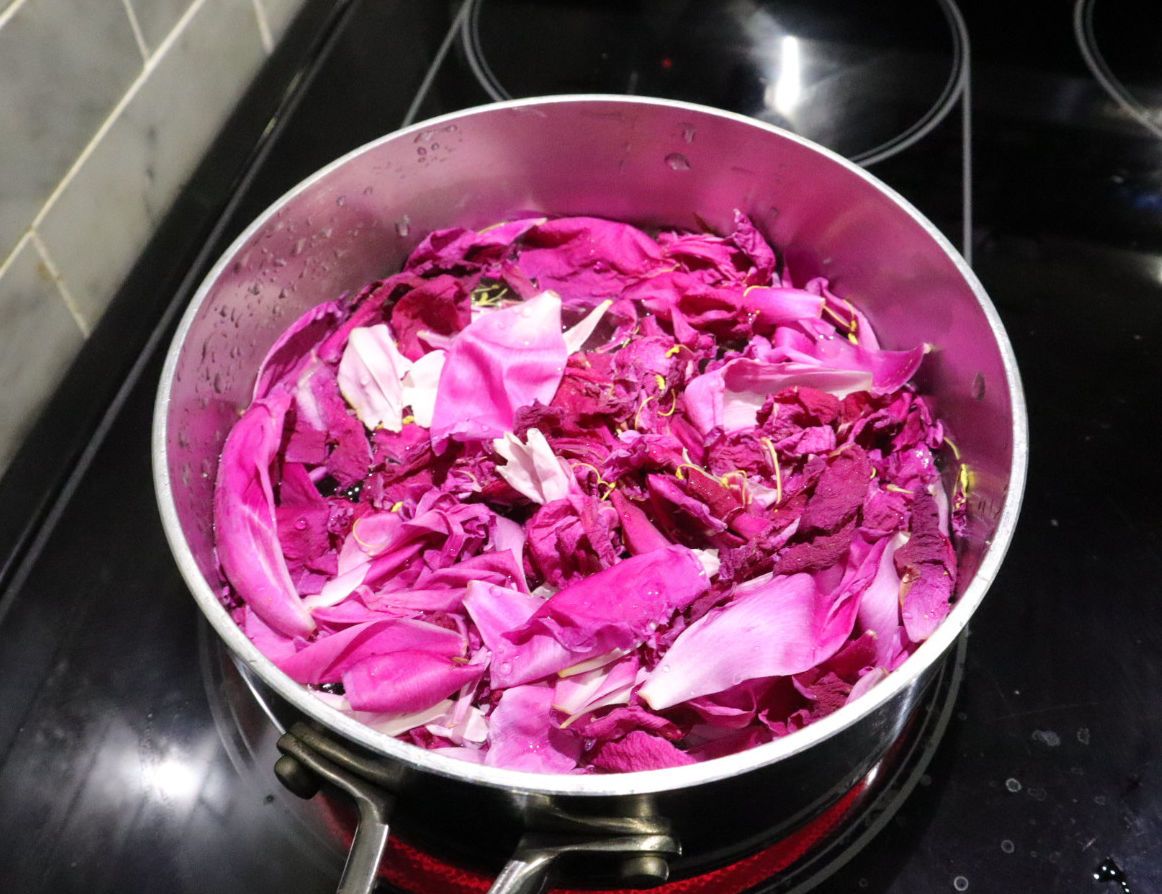
Since I watched a video on YouTube about indigo plant dyeing in Japan, I’ve been very interested in doing it myself. I’m drawn to the idea of replicating manufacturing processes from source to finished product in my own home. So, I wondered if I could grow my own indigo at a smaller scale. After some really shallow research I realized that would probably be too much commitment. I don’t have much project space and true indigo, Indigofera tinctoria, probably shouldn’t be grown where I am.
During this time I followed a bunch of Canadian natural dye artists, particularly @cedarsandsage on Instagram. She dyes fabric into beautiful art using natural materials like fruit, nuts, and minerals. Keeping her on my feed continuously reminded me to try it out some time.
Peony blooms don’t really last long. They’re bright and showy but there is some bittersweetness to that impermanence. After harvesting a ton of those flowers and having them in our house for a maximum of one day- I decided to take the wilting petals and boil them.
This time I tried to do it semi-properly. I mean as properly as a 30 minute google research and household chemicals could get me.
First I had to prepare my yarn somehow. Now I only had a very vague idea of what “mordant” meant. It’s a reagent that fixes dyes to materials. There’s a lot of information out there, and they very much contradict themselves. I knew I had to put this cotton yarn into a mordant and I only had vinegar. What do I do with the vinegar? Does it go in the petal/dye solution, or does it prep the yarn?
I read somewhere that it would be ideal to boil my plant-derived yarn: 100% cotton in 1:4 vinegar to water. Then after 30 minutes, which was supposed to be 1 hour but I’m too impatient, I started simmering the petals I had in a 1:1 ratio of petals to water. I didn’t add anything else to it. But I did not know what simmering was supposed to mean. Should I have kept it covered? But then the water was spilling over the pot… And then I’d also have to keep watch of the pot and make sure it was still bubbly.
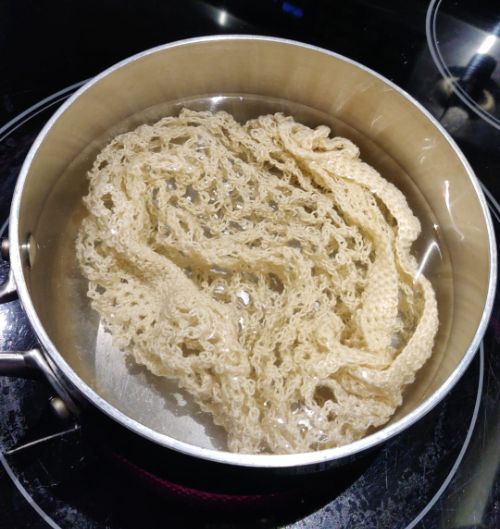
I opted to let it only almost simmer, because Overwatch could not wait and I do not like watching water boil.
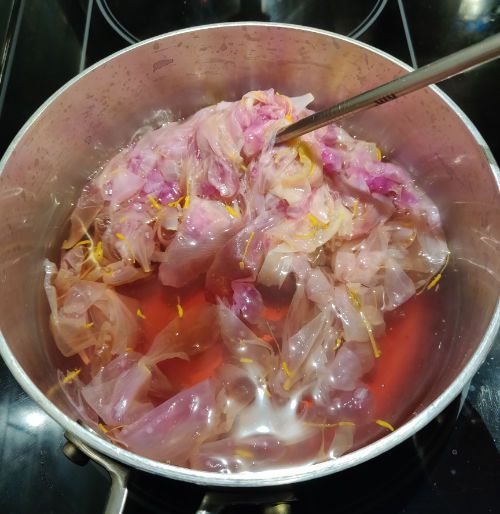
Within only 15 minutes (I got up after a game), the water turned from yellow, to green, to pink.
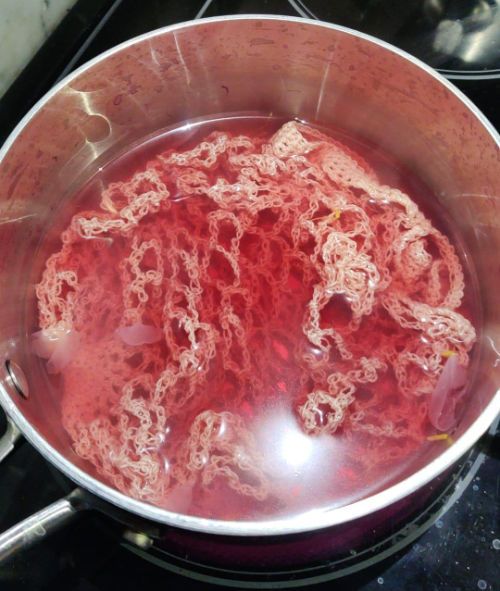
In 30 minutes, I picked out the peony petals and dunked the vinegary market bag into the pot.
I left it in there for only 15 minutes before taking it off the heat and putting it in a bowl to stay overnight. This is what it looked like before I went to sleep:
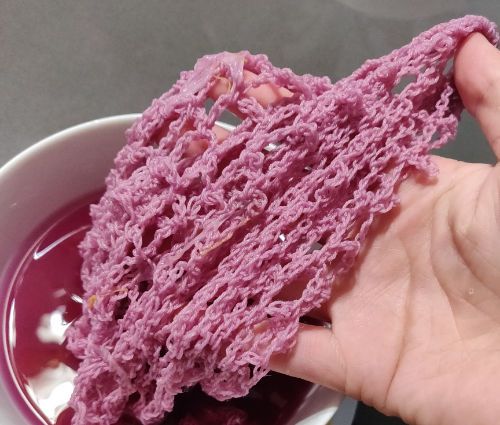
I did expect pink flowers to come out with purple pigment. I had done an experiment before by boiling some pink flower petals in a pot and using the pigment as paint. This is what it looked like in the morning while it was still wet:
Since deep purple is actually a color I really don’t like, I was glad that it ended up being a lighter lavender after drying. Unfortunately, the color was also quite patchy. I think I did something wrong. The color didn’t penetrate the yarn very well, and I had only rinsed it out under cool water.
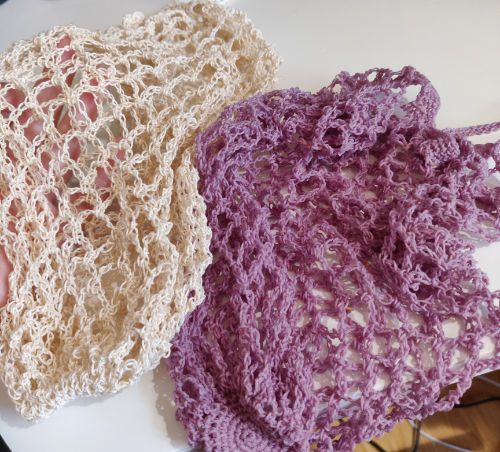
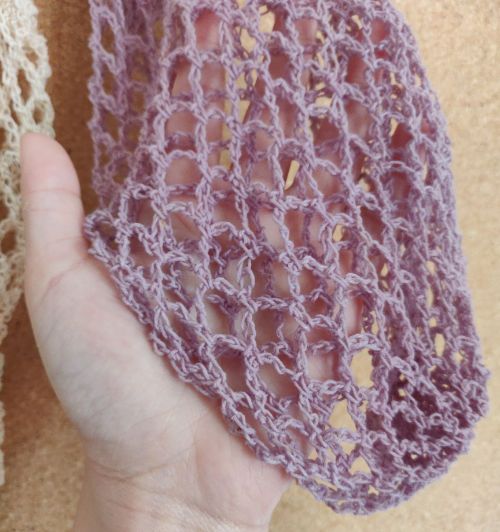
After some more research I realized that maybe the vinegar was meant to simmer in the petal bath instead of the yarn. And to prep my cotton yarn- I should have used either soy milk or ash– not vinegar. Don’t ask me to cite all of this information I’m saying, this is just a bunch of assumptions I’m coming up with after reading A LOT of contradicting anecdotal experiences with vinegar.
There is however, a lot of good information in dyeing with more standard reagents like alum and soda ash. I think I will try this again but with better materials. A long time ago I bookmarked a store called Maiwa.com. It’s a Vancouver founded company that work primarily with artisans from India. They promote slow clothes, natural dyes, and skilled artisans. They have a lot of information on natural dyeing and kits to work with. I found these kits to be the best deal and most trustworthy in terms of quality and educative documentation. Next time, I will order a beginner set from them and do this experiment again with another set of undyed yarn.